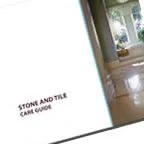
Fissures vs Cracks
Natural stone, granite, marble, quartzite, etc., is made by, well, nature. Man has nothing to do with it. We just quarry it, sell it, and put it where clients want it. Then we ooh and ahh and remark how pretty it looks. Yes, it is pretty and it does deserve our admiration, but it can have natural, unique occurrences in it called fissures. Fissures can give your stone project that one-of-a-kind look that people love. Natural stone can also have cracks. Cracks can be natural or unnatural occurrences. Fissures and cracks look remarkably similar, but they are not the same thing. Here we will explore the differences between them and help you know what to do about them.
What are fissures?
Fissures are defined as: A long, narrow crack or opening in the face of a rock. Fissures are often filled with minerals of a different type from those in the surrounding rock.
Basically, what this means, is that fissures are natural occurrences in the stone and normally they don’t affect the integrity of the stone itself. They are not considered to be flaws or defects. Fissures are not normally localized in stone slabs. They are usually spread out through the entire piece.
What are cracks?
Cracks are defined as: A line on the surface of granite, marble or another natural stone that has split without breaking into separate parts.
Cracks usually happen when the stone has stress or trauma applied to it, and they can run almost all the way through the depth of the stone. However, by the time the stone gets to the point of installation, cracks have generally been addressed, usually by the fabricator. As a general rule, cracks are mostly confined to one area of a slab.
How can you tell the difference between fissures and cracks?
One way is to rub your finger or fingernail over the area in question. If it is smooth, then it is a fissure. If your finger feels a bump or your fingernail gets caught or drags over the area because it’s not level, then it is a crack.
Another way to tell is to shine a light on the stone and look across the plane of the surface. A crack will have two points of reflection, one for each plane, but a fissure will only have one point of reflection as it is an even surface.
What can be done about fissures?
Nothing. They are a natural part of the stone and are not considered flaws or defects. You can just admire them for making your stone project unique.
What can be done about cracks?
If you see a crack while the stone is still at the distributor or wholesaler, think about staying away from it, no matter how much you love it. There is no guarantee that the stone will survive transport to the fabricator, and there is no guarantee that the fabricator will be able to cut around it.
If you discover a crack in the stone at the fabricator’s shop, find out if they can cut around it. If not, ask them if it is severe enough to compromise the integrity of the stone. If they say yes, then pick something else. If the fabricator says it’s minor, ask them how they intend to fix it. Then it is up to you whether you accept it or pick something else.
What if a crack forms after install?
If you notice a crack after install, you will want to have someone look at it right away. Left unattended, it could get worse. If your project was recently put in, you may want to give the business that installed it a call. They won’t warranty the stone itself, because Mother Nature made it, but a good company will warranty their own workmanship. If it has been a while or you know you did something to cause the crack, even accidently, you should contact your stone and tile restoration and repair technician. Your restoration or repair technician will know exactly what the issue is and how to repair it. They deal with these types of occurrences on a regular basis.
Natural stone is beautiful, and the projects created with it can take your breath away. In spite of its natural beauty and versatility, it is not a perfect product. We need to learn how to appreciate and work with its occasional imperfections and flaws. After all, those unique imperfections can help give your stone projects the “WOW” factor everyone loves.
By Sharon Koehler. This article is one of a series of articles written and published on behalf of Surface Care PRO Partners.







